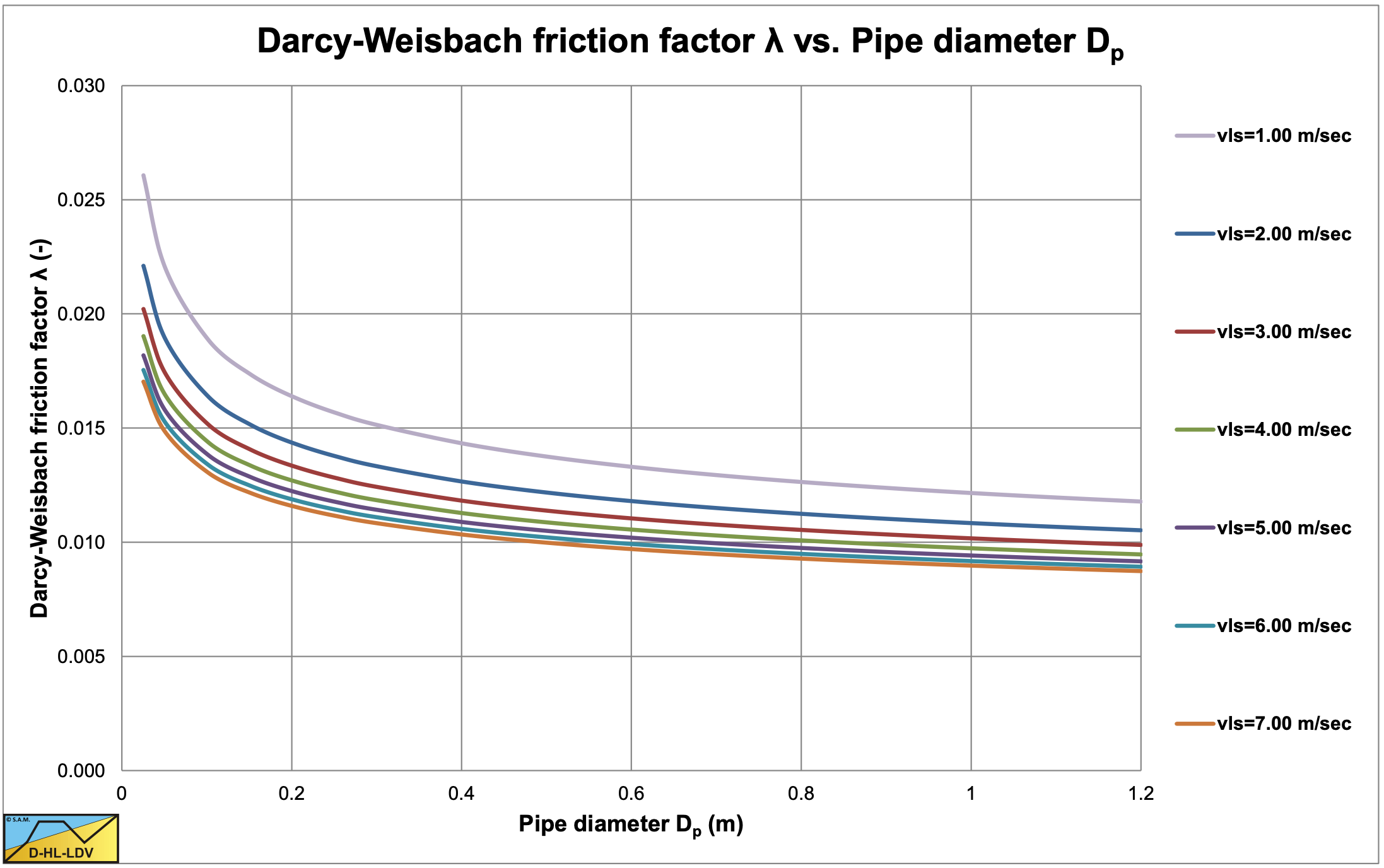3.7: The Smallest Eddies
- Page ID
- 29968
The ratio between the largest eddies and the smallest eddies in turbulent pipe flow is of the magnitude of the Reynolds number to the power of 3⁄4. Assuming that the largest eddies are of the magnitude of the pipe diameter, then this gives for the diameter of the smallest eddies:
\[\ \mathrm{d}_{\mathrm{e}}=\frac{\mathrm{D}_{\mathrm{p}}}{\mathrm{R} \mathrm{e}^{\mathrm{3} / 4}}=\frac{\mathrm{D}_{\mathrm{p}}^{\mathrm{1} / 4} \cdot \mathrm{v}_{\mathrm{l}}^{\mathrm{3} / 4}}{\mathrm{v}_{\mathrm{l}}^{3 / 4}}\]
Using the Blasius equation for the Darcy Weisbach friction factor, this gives for the ratio between the diameters of the smallest eddies to the thickness of the viscous sub layer:
\[\ \frac{\mathrm{d}_{\mathrm{e}}}{\delta_{\mathrm{v}}}=\mathrm{0 . 0 1 7} \cdot \mathrm{R} \mathrm{e}^{\mathrm{1/8}}\]
For Reynolds numbers ranging from 100,000 for small pipe diameters to 10,000,000 for large pipe diameters this gives a ratio of 0.072 to 0.127, so about 10%.




